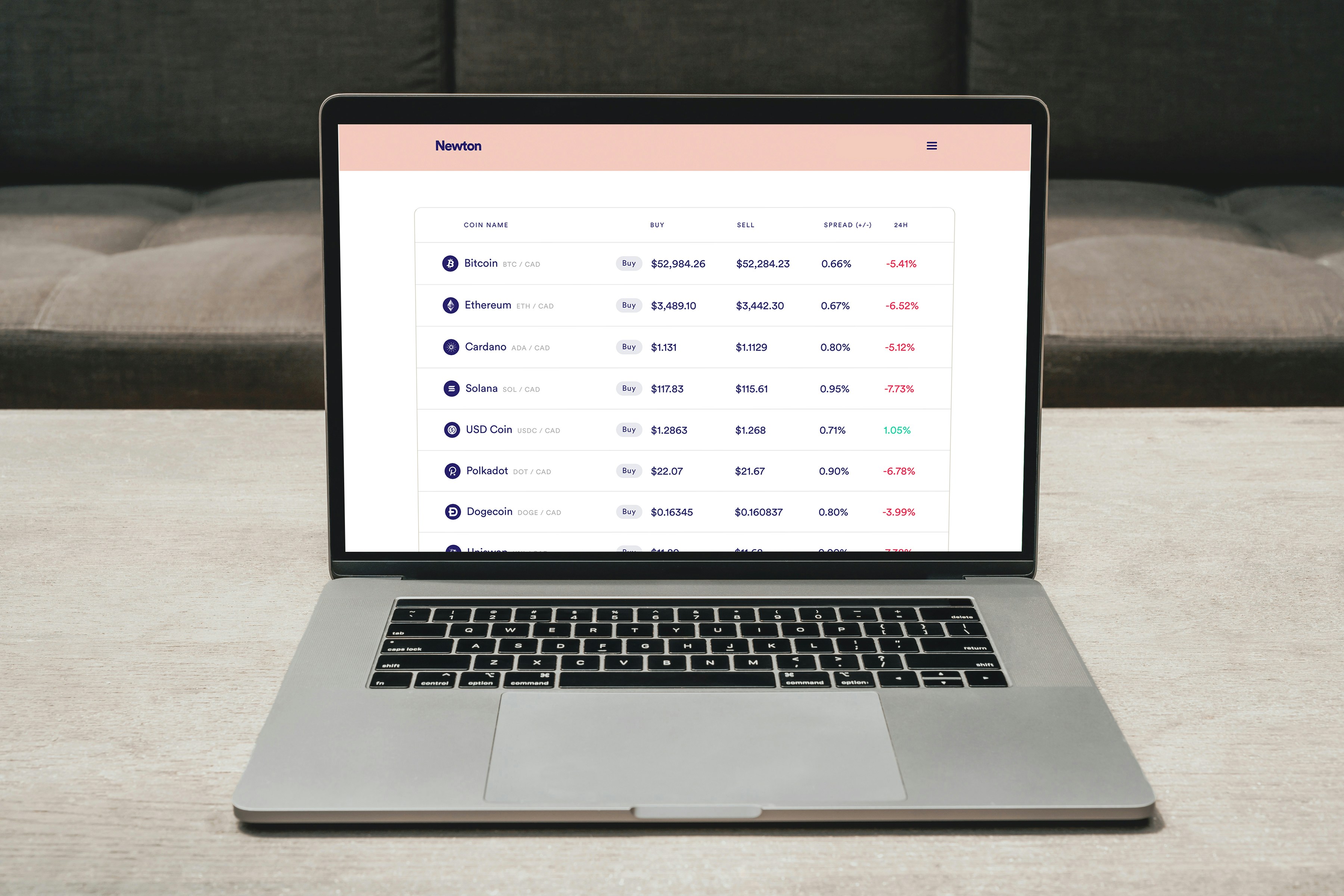
Understanding Digital Currencies
Digital currencies, often referred to as cryptocurrencies, are a form of money that exist solely in digital form. Unlike traditional currencies issued by governments (also known as fiat currencies), digital currencies are decentralized and typically built on blockchain technology, which serves as a public ledger for transactions. This innovative structure allows cryptocurrencies to operate without a central authority, enhancing their transparency, security, and resistance to fraud.
Among the myriad of digital currencies available, Bitcoin and Ethereum stand out as the most prominent players in the market. Launched in 2009, Bitcoin was the first cryptocurrency and remains the most valuable, often regarded as a digital gold due to its finite supply capped at 21 million coins. It utilizes a proof-of-work consensus mechanism, which involves miners verifying transactions and securing the network through complex computational puzzles. Its primary characteristics include pseudonymity, divisibility, and high portability, making it a popular choice for investment and online transactions.
On the other hand, Ethereum, introduced in 2015, brought forth the concept of smart contracts—a set of self-executing agreements with the terms directly written into code. This capability has enabled Ethereum to become a foundation for decentralized applications (dApps) and numerous tokens developed on its blockchain. With its own native currency, Ether (ETH), Ethereum is not just a currency but also a platform driving innovation in various sectors, including finance, gaming, and supply chain management.
The relevance of digital currencies in today’s financial landscape cannot be overstated. They offer alternatives to traditional financial systems, fostering financial inclusion and enabling cross-border transactions without the need for intermediaries. As more individuals and institutions recognize the utility and potential of digital currencies, their adoption continues to grow, sparking discussions around regulation, security, and the future of money.
The Basics of Trading Digital Currencies
Trading in digital currencies, often referred to as cryptocurrency trading, has become a widely popular investment strategy. At the core of this trading practice are fundamental concepts such as buying, selling, and trading pairs, which are essential for anyone looking to navigate the complexities of this digital landscape.
To initiate trading, one must first select a reputable exchange where they can buy and sell various cryptocurrencies. These platforms serve as intermediaries, allowing traders to exchange fiat currency for digital currencies like Bitcoin, Ethereum, and many others. Key trading terminologies frequently encountered include ‘market order’, which refers to buying or selling an asset at the current market price, and ‘limit order’, where a trader specifies the price at which they wish to buy or sell. Understanding these terms is vital for effective trading operations.
Digital currencies can be traded in pairs, allowing investors to buy one cryptocurrency while simultaneously selling another. For example, a trading pair like BTC/ETH indicates that Bitcoin is being traded against Ethereum, with the potential for profit derived from the value fluctuations between these currencies. The ability to trade in various pairs allows for strategic diversification and dynamic investment opportunities.
The motivations behind engaging in digital currency trading can vary. For some, the allure lies in the potential for significant profits, while others may be driven by interest in the underlying technology or a desire for portfolio diversification. The volatile nature of digital currencies can lead to high-risk, high-reward scenarios, necessitating careful consideration of market trends and personal risk tolerance.
In conclusion, understanding the basics of trading digital currencies, including essential terminologies, trading pairs, and platform selection, is crucial for anyone aiming to succeed in this evolving field. The potential rewards are substantial, but they come with their own set of risks that traders must navigate with diligence and informed decision-making.
Analyzing Market Trends and Price Movements
Successful trading in digital currencies requires a deep understanding of market trends and price movements. Traders often rely on a variety of analysis methods to navigate the volatile landscape of cryptocurrencies. Key among these analysis methods are technical analysis, fundamental analysis, and sentiment analysis. Each of these approaches provides unique insights that can significantly enhance a trader’s ability to make informed decisions.
Technical analysis involves evaluating price charts and using historical data to forecast future price movements. Traders utilize various indicators such as moving averages, Relative Strength Index (RSI), and Fibonacci retracement levels to identify potential entry and exit points. By interpreting these patterns, traders can make educated predictions about future price behavior, allowing them to capitalize on trends and reversals in the market.
On the other hand, fundamental analysis focuses on the underlying factors that influence the value of digital currencies. This includes evaluating news events, regulatory changes, technological advancements, and overall market conditions. For instance, positive developments such as increased adoption of blockchain technology or favorable government regulations can drive prices up, while negative news can lead to declines. Traders who incorporate fundamental analysis into their strategies are often better positioned to understand long-term trends in the digital currency market.
Sentiment analysis, a more subjective method, gauges the overall mood of the market through social media trends, news headlines, and public sentiment towards specific cryptocurrencies. By understanding how the market perceives certain events or currencies, traders can anticipate potential price movements even before they occur. Tools that aggregate social media sentiment can provide a real-time snapshot of market psychology, helping traders make timely decisions.
By combining these methods, traders can build a more holistic view of market dynamics, improving their chances of profiting from their digital currency investments. Understanding these different analytical approaches is essential for anyone looking to thrive in the rapidly changing digital currency landscape.
Risk Management in Digital Currency Trading
Trading in digital currencies presents numerous potential for profit, yet it is accompanied by significant risks that can lead to substantial financial loss. Effective risk management in digital currency trading is crucial to ensure that traders can navigate the volatile market landscape while protecting their investments. A comprehensive risk management strategy must be an integral part of any trading plan, allowing traders to minimize losses and secure their profits.
One of the fundamental techniques in risk management is the use of stop-loss orders. A stop-loss order is an automatic instruction to sell a digital asset when its price falls to a predetermined level. This tool helps mitigate potential losses and provides traders with the assurance that their position will be liquidated before it reaches a critical point of decline. By setting stop-loss orders, traders can define their risk threshold upfront, making it easier to execute a disciplined trading strategy without emotional interference.
Another essential aspect of risk management is portfolio diversification. By investing in a variety of digital currencies rather than concentrating all capital in a single asset, traders can spread their risk. Diversification can cushion against market volatility, as losses in one area may be offset by gains in another. It is prudent for traders to incorporate a mix of currencies with different market behaviors and risk profiles to create a more balanced portfolio.
Emotional discipline also plays a vital role in effective risk management. The digital currency market is influenced by rapid price fluctuations that can trigger emotional responses, potentially leading traders to make impulsive decisions. Developing a solid trading plan that includes entry and exit points, as well as maintaining a level-headed approach during market turbulence, is key to long-term success. By adhering to a well-defined strategy and leveraging risk management techniques, traders can enhance their ability to profit from trading in digital currencies while minimizing potential downsides.
Building a Trading Strategy
Developing a comprehensive trading strategy is crucial for success in the volatile world of digital currencies. A well-defined strategy helps traders navigate market fluctuations, making informed decisions to maximize potential profits. The first key component of an effective trading strategy is setting clear goals. Establishing what one aims to achieve—be it short-term gains, long-term investment, or a combination of both—provides direction and focus. These objectives must be realistic and tailored to the trader’s risk tolerance and financial resources.
Secondly, defining time frames is integral to the trading process. Depending on individual preferences, traders may adopt a scalping approach for quick profits, or a longer-term strategy that allows time for markets to mature. Each method has its own advantages and drawbacks, influencing both trading frequency and the emotional toll of market movements. By choosing a specific timeframe, traders can streamline their focus and improve decision-making processes, ultimately leading to more profitable trades.
The selection of trading pairs is another essential aspect of strategy formulation. The digital currency market is diverse, comprising numerous coins with unique price movements and market dynamics. Traders should conduct thorough research to identify pairs that align with their goals and familiarity. Considerations such as liquidity, volatility, and market cap can significantly impact the potential for profit in any given trade.
Finally, backtesting strategies is necessary to assess their effectiveness under varying market conditions. By applying past data to the trading strategy, traders can gain insights into its reliability and make necessary adjustments. Continuous refinement based on performance analysis positions traders to adapt to changing market landscapes and enhances their prospects for profitability in digital currency trading. This disciplined approach ensures traders remain agile and informed, contributing to their overall success in the field.
The Role of Regulations in Digital Currency Trading
The trading of digital currencies is intertwined with a complex web of legal and regulatory frameworks that vary significantly across jurisdictions. These regulations are designed to protect investors, prevent financial crimes, and promote fair trading practices. The evolving nature of digital currencies has prompted regulators around the world to develop specific guidelines that govern trading activities and ensure market integrity.
One major area of focus in the regulatory landscape is the classification of digital currencies. Many countries categorize them as either securities or commodities, each attracting distinct regulatory requirements. For instance, in the United States, the Securities and Exchange Commission (SEC) has established criteria to determine whether a digital currency qualifies as a security, thereby subjecting it to strict reporting obligations. This classification affects the compliance obligations for traders and exchanges, highlighting the necessity for adherence to these regulations to avoid potential penalties.
Additionally, the implementation of Anti-Money Laundering (AML) and Know Your Customer (KYC) regulations has become commonplace among exchanges and trading platforms. These rules require traders to verify their identities and report large transactions, thereby fostering a secure trading environment. Compliance with these regulations is essential for maintaining the legitimacy of trading operations and for integrating with traditional financial systems.
Regulatory changes can significantly influence market behavior and trader strategies. Traders must remain vigilant in tracking updates related to digital currency legislation, as shifts can lead to volatility in asset prices. Being proactive about understanding regulatory implications ensures that traders can navigate the market effectively while minimizing legal risks. Thus, the role of regulations is critical, shaping not only the structure of digital currency trading but also the opportunities available for potential profit in this dynamic market.
Case Studies of Successful Digital Currency Traders
Digital currency trading has attracted numerous individuals seeking financial independence and success. By examining the strategies and experiences of successful traders, valuable insights can be derived that may assist those interested in entering the market. One notable example is the case of a trader known as “CryptoKeen,” who implemented a hybrid trading strategy combining both technical analysis and fundamental research.
CryptoKeen strategically utilized chart patterns, moving averages, and trading volume to guide his entry and exit points for various digital currencies. Beyond technical metrics, he dedicated substantial time to studying market news and trends influencing prices. By doing so, he was able to identify potential investment opportunities before they gained traction. This approach afforded him gains of over 200% in his initial investment within a year, illustrating the effectiveness of a balanced approach between technical and fundamental analysis.
In contrast, another case highlights the plight of “AltcoinDev,” who heavily relied on social media hype without conducting thorough evaluations of the currencies he invested in. Initially, he experienced significant returns due to the volatile nature of digital currency markets. However, his lack of due diligence ultimately led to losses when market sentiments shifted unfavorably. His experience emphasizes the importance of resilience and the necessity of thorough research before investing.
Moreover, it is crucial for aspiring traders to adopt risk management strategies. Successful traders often emphasize setting stop-loss orders and keeping emotions in check. This discipline allows them to navigate market fluctuations more effectively. Overall, analyzing these case studies sheds light on the multifaceted dimensions of trading in digital currencies, enabling newcomers to develop a more informed and strategic approach while avoiding common pitfalls encountered by others in their trading journey.
The Future of Digital Currency Trading
The landscape of digital currency trading is poised for significant evolution, influenced by emerging trends, technological advancements, and shifts in market dynamics. As cryptocurrencies gain mainstream acceptance and regulatory frameworks become more defined, the future presents numerous opportunities and challenges for traders and investors alike.
One of the most notable trends is the increasing integration of blockchain technology beyond mere transactions. Innovations within the decentralized finance (DeFi) space are transforming how trading occurs by introducing new financial instruments and services that were previously unattainable for the average consumer. DeFi platforms enable users to lend, borrow, and trade directly without intermediaries, enhancing liquidity and potentially increasing trading efficiency. As these platforms gain traction, they will likely change the traditional trading paradigm, enabling broader participation in the digital currency market.
Moreover, the rise of artificial intelligence (AI) in trading strategies signifies another exciting frontier. Advanced algorithms that analyze vast datasets may improve traders’ decision-making processes by identifying trends and executing trades based on real-time information. As machine learning models continue to evolve, their application in digital currency trading could lead to more precise insights, optimizing risk management and enhancing profitability for traders.
The market is also witnessing the diversification of digital assets, with the introduction of stablecoins and central bank digital currencies (CBDCs). These developments provide new trading opportunities and may attract a wider range of participants. As stability and regulatory backing characterize these digital assets, they might foster greater confidence among institutional investors, potentially leading to an influx of capital into the digital currency sphere.
In conclusion, the future of digital currency trading appears promising, albeit complex. By incorporating innovative technologies and adapting to changing market conditions, traders can navigate the evolving landscape effectively, positioning themselves for potential profitability in an increasingly dynamic environment.
Conclusion: Is Trading Digital Currencies Right for You?
Ultimately, the decision to engage in trading digital currencies involves a careful evaluation of several key factors. As outlined in the preceding sections, the potential for profit in the cryptocurrency market is significant, attracting both novice and seasoned investors. However, it is essential to recognize that with high potential rewards come substantial risks. The volatility in the cryptocurrency space can lead to dramatic price swings, resulting in losses as quickly as gains.
Before entering the world of digital currency trading, individuals should honestly assess their financial goals and risk tolerance. Trading strategies should align not only with personal investment objectives but also with one’s ability to withstand potential financial downturns. For instance, those interested in short-term trading may experience more frequent fluctuations in their portfolios compared to those who prefer a long-term investment approach. It is advisable to have a clear strategy that includes risk management measures, which can help mitigate potential losses.
Moreover, education plays a crucial role in navigating the complexities of digital currencies. Prospective traders should familiarize themselves with various cryptocurrencies, market trends, and trading strategies. Engaging in thorough research and possibly consulting with financial advisors can provide valuable insights and help individuals make informed decisions. Keeping abreast of market developments is also essential, as the landscape of digital currency is continually evolving.
In conclusion, whether trading digital currencies is the right choice for you depends on your personal financial situation, investment strategy, and comfort level with market volatility. By taking a disciplined approach and remaining well-informed, traders can position themselves to navigate the dynamic environment of digital currencies successfully, potentially reaping the financial rewards while being mindful of the inherent risks involved.







